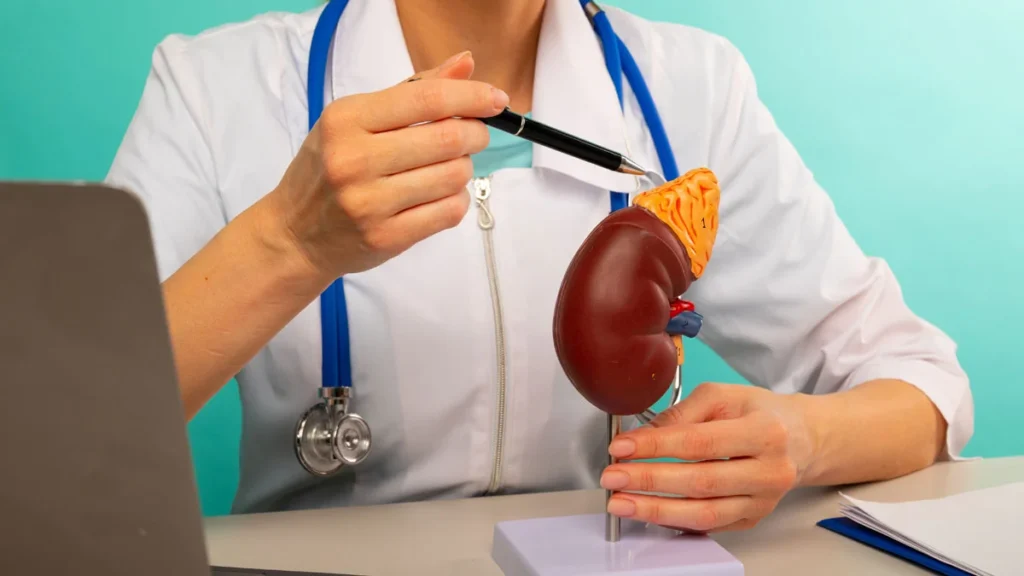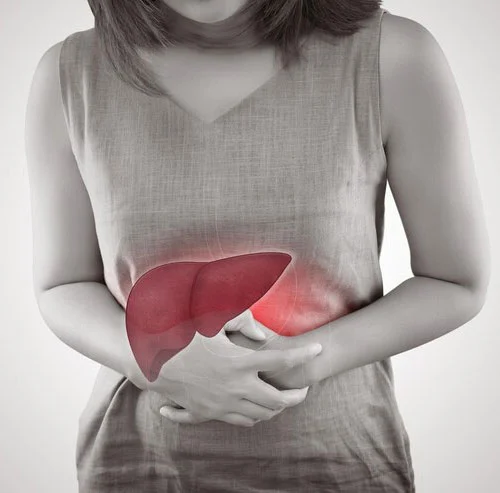
Non-alcoholic fatty liver disease: Symptoms and Treatment
You’re respectfully following all the standard health advice – eating right, exercising regularly, avoiding alcohol, and living that ‘perfect’ life. So you should be immune to liver issues, right? But, there’s a problem, you can still get – non-alcoholic fatty liver disease (NAFLD).
NAFLD is what happens when over 5-10% of your liver’s total weight consists of excess fat deposits. Essentially, it’s a fatty liver condition that occurs in people who don’t consume alcohol in quantities known to cause liver disease.
The tricky part is that in its earliest stages, NAFLD is typically a silent offender without any obvious symptoms. It just kind of moves in unannounced like an unwanted houseguest, making itself comfortable while you remain completely unaware.
However, if left unbothered and unmanaged, that small bit of excess liver fat can steadily progress into an increasingly severe condition – non-alcoholic steatohepatitis (NASH). This is the active inflammation and liver injury phase that can eventually advance into fibrosis, cirrhosis, and even put you at higher risk for liver cancer or liver failure down the road.
Table of Contents
ToggleSigns and Symptoms of NAFLD
Since NAFLD is often asymptomatic in its earlier stages, the only reliable way to detect it is through specialized blood tests and imaging ordered by your doctor. However, some people do experience telltale signs that their liver is getting a little too fat for its own good, including:
- Unexplained fatigue and weakness
- Discomfort or dull pain in the upper right abdominal area
- An enlarged liver that may be felt during a physical exam
- Swollen abdomen from fluid buildup
- Enlarged blood vessels just beneath the skin’s surface
Again, these could simply be innocuous symptoms stemming from something entirely unrelated. But if they persist, schedule an appointment with Dr. G. S. Sindhu, who is the Best Gastroenterologist in Mohali.
What Causes This Uninvited Visitor?
While the precise biology behind NAFLD’s onset is still being uncovered, we know it tends to go hand-in-hand with a few specific profiles and preexisting conditions, including:
- Obesity (especially excess belly fat)
- Insulin resistance and type 2 diabetes
- High triglyceride and low HDL cholesterol levels
- Metabolic syndrome
- Polycystic ovary syndrome (PCOS)
- Rapid weight loss
- Certain medications and toxins
Genetics also seem to play a role, as do the usual unhealthy lifestyle culprits like terrible diet, lack of exercise, and smoking. Essentially, NAFLD thrives on the perfect storm of metabolic dysfunction, hormone imbalances, and toxic overconsumption. A grim trifecta sadly plaguing many modern societies.
Granted, some individuals manage to develop NAFLD without checking any of those risk factor boxes. But for the most part, it’s a condition intrinsically linked to the consequences of our dietary habits and sedentary existences.
Since NAFLD is so closely tied to reversible diet and lifestyle triggers, it’s very much a preventable and treatable disease if you catch it early enough.

Prevention of NAFLD
Okay, say you or a loved one gets the unfortunate diagnosis of NAFLD. What’s the ideal game plan for fighting back against this surly houseguest before it affects your liver? Well, a multipronged strategy combining all the following tactics gives you the best chance at reversing and halting NAFLD’s progression:
- Achieve and maintain a healthy body weight through a balanced diet and exercise. Losing even just 3-5% of your body weight can tremendously help.
- Focus on an anti-inflammatory, low-sugar, nutrient-dense diet rich in fiber, antioxidants, and healthy fats. Certain supplements like vitamin E, omega-3s, and probiotic blends may also provide added benefits.
- Properly manage any related conditions like type 2 diabetes, high cholesterol, hypertension, etc. Keeping your whole body in balance is key.
- Limit alcohol consumption as much as possible, as it can exacerbate existing liver inflammation.
- Explore medication options like vitamin E, pioglitazone, or treatments that specifically target NAFLD and NASH under proper medical supervision when lifestyle adjustments aren’t enough.
Finding the Best Treatment for NAFLD
If you are finding the Best Treatment for NAFLD in Mohali, the specialists at Hale Clinics have you covered. Their powerful team of the region’s best Gastroenterologists and other health professionals deploy the latest screening tools and progressive treatment protocols to get NAFLD under control. Through comprehensive lab testing and diagnostic imaging, they have no problems diagnosing fatty liver disease – even in those frustratingly asymptomatic early stages.
But perhaps their biggest asset is an unwavering commitment to patient empowerment. The experts at Hale don’t just treat your fatty liver disease, they take the time to educate and equip you with all the knowledge and tools needed to actively control it for the long haul. From group classes covering meal planning and preparation to ongoing one-on-one coaching, you’ll never feel alone or overwhelmed on your path to better liver health.
Conclusion
Look, NAFLD might seem pretty harmless at first, but willfully ignoring that greedy houseguest is a surefire way to wind up with permanent liver damage and potential organ failure down the line.
Fortunately, when you catch it early and commit to reclaiming your metabolic health, this is very much a reversible condition. All it takes is some discipline, lifestyle adjustments, and professional medical support from dedicated experts like those at Hale Clinics.
FAQs
1. What is non-alcoholic fatty liver disease (NAFLD)?
Ans. NAFLD is a condition that occurs when over 5-10% of the liver’s total weight consists of excess fat deposits in people who don’t consume alcohol in quantities known to cause liver disease.
2. What are the symptoms of NAFLD?
Ans. In its early stages, NAFLD is often asymptomatic. However, some people may experience unexplained fatigue and weakness, discomfort or dull pain in the upper right abdominal area, or enlarged blood vessels just beneath the skin’s surface.
3. What causes NAFLD?
Ans. NAFLD is often associated with obesity, type 2 diabetes, high triglyceride and low HDL cholesterol levels, metabolic syndrome, PCOS, rapid weight loss, certain medications, and toxins.
4. How can NAFLD be prevented?
Ans. NAFLD can be prevented by achieving and maintaining a healthy body weight through a balanced diet and exercise, managing conditions like type 2 diabetes and high cholesterol, limiting alcohol consumption, and exploring medication options under proper medical supervision when necessary.
5. Where can I find the best treatment for NAFLD in Mohali?
Ans. Hale Clinics in Mohali offers comprehensive treatment for NAFLD, with a team of experienced gastroenterologists and health professionals who use the latest screening tools and progressive treatment protocols.
